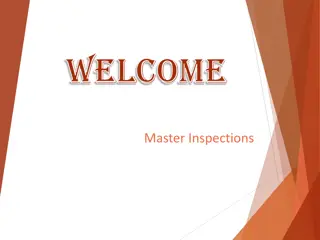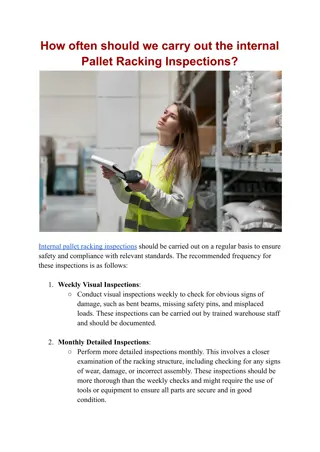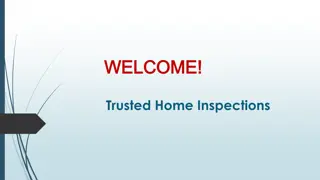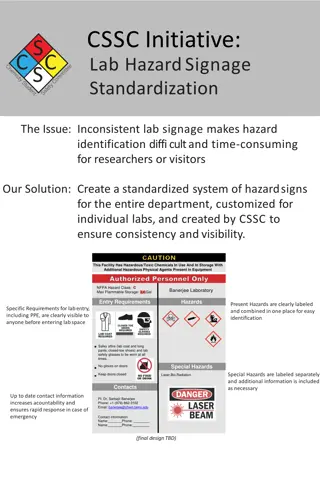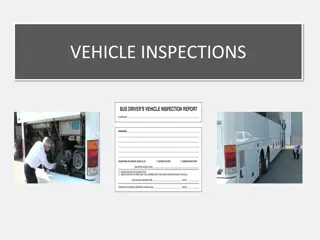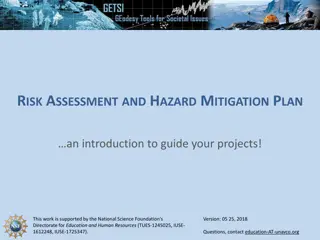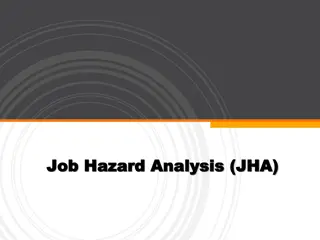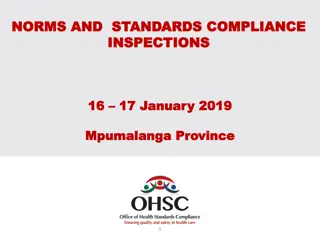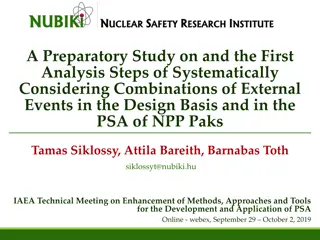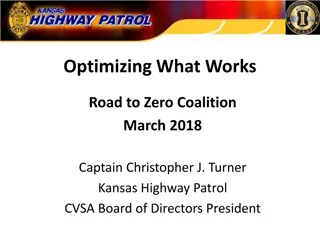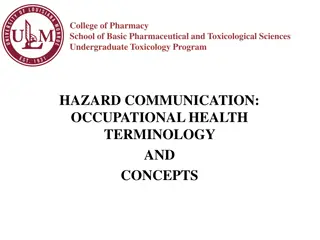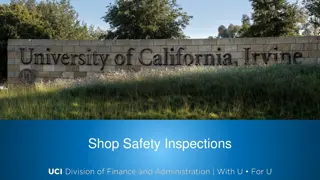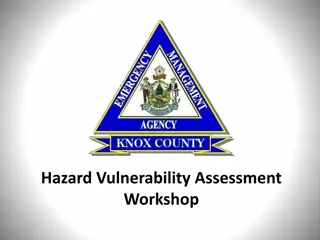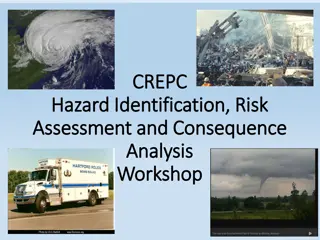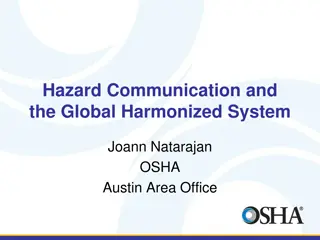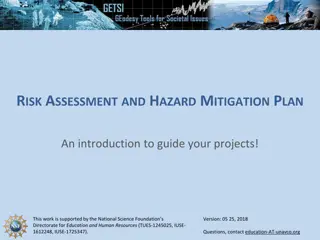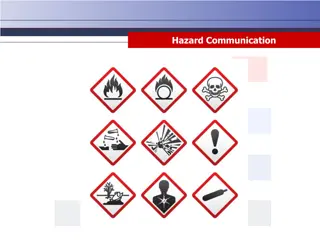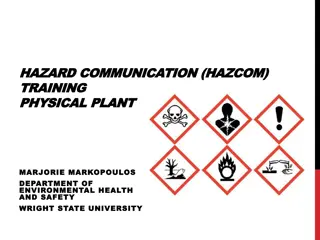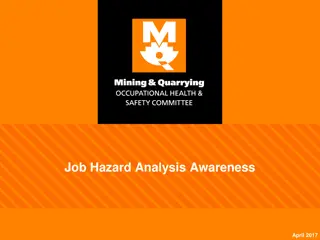Importance of Workplace Inspections and Hazard Identification
Workplace inspections are critical processes to identify and mitigate hazards in a work environment. These inspections help ensure the safety of employees by addressing potential risks such as biological, chemical, physical, safety, ergonomic, and psychosocial hazards. Regular inspections allow for the removal or avoidance of hazards and enhance staff engagement regarding safety. It is important to inspect and review risk control measures when incidents occur, new elements are introduced, changes are made in the workplace layout, or upon request by health and safety representatives.
Download Presentation

Please find below an Image/Link to download the presentation.
The content on the website is provided AS IS for your information and personal use only. It may not be sold, licensed, or shared on other websites without obtaining consent from the author. Download presentation by click this link. If you encounter any issues during the download, it is possible that the publisher has removed the file from their server.
E N D
Presentation Transcript
Workplace Inspections and Record Keeping Workplace Inspections and Record Keeping Work Health Safety & Wellbeing Unit
What is a Workplace Inspection? A workplace inspection is the process of critically examining the workplace for the identification and mitigation of workplace hazards and to ensure that all standards are met and the workplace is in fact safe and free from any risks. Workplace inspections are an ongoing process that play an important role in actively monitoring an organization's safety and adherence to safe practices. They need to be carried out regularly.
What is a Hazard? A hazard is anything that has the potential to A hazard is anything that has the potential to cause harm cause harm
Biological: Biological hazards include viruses, bacteria, insects, animals, etc., that can cause adverse health impacts. For example, mould, blood and other bodily fluids, harmful plants, sewage, dust and vermin. Chemical: Chemical hazards are hazardous substances that can cause harm. These hazards can result in both health and physical impacts, such as skin irritation, respiratory system irritation, blindness, corrosion and explosions. The six main categories of hazards are: Physical: Physical hazards are environmental factors that can harm an employee without necessarily touching them, including heights, noise, radiation and pressure. Safety: These are hazards that create unsafe working conditions. For example, exposed wires or a damaged carpet might result in a tripping hazard. These are sometimes included under the category of physical hazards. Ergonomic: Ergonomic hazards are a result of physical factors that can result in musculoskeletal injuries. For example, a poor workstation setup in an office, poor posture and manual handling. Psychosocial:Psychosocial hazards include those that can have an adverse effect on an employee s mental health or wellbeing. For example, sexual harassment, victimisation, stress and workplace violence.
Why should we do inspections? Because regular inspections critically examines the workplace to identify and report potential hazards that can be removed or avoided and allow you to engage directly with staff about safety.
When should you inspect? You need to inspect and review your risk control You need to inspect and review your risk control measures: measures: When a control measure is not working (eg when someone is injured or experiences a near miss ) Before workplace layout or practices are changed When new equipment, materials or work processes are introduced If a new problem is found If consultation shows a review is necessary If a health and safety representative requests it
Who should do the inspection? Persons in charge of workplaces. Shared facilities - Persons in charge of workplaces need to formally organise the inspection between facilities. Facilities/Buildings with no nominated person in charge Facilities management should nominate a person to be in charge for inspections HSRs and WHS & Wellbeing have the legal right to inspect any facility without notice.
During an inspection, identify any unsafe conditions and activities that may cause injury or illness, and figure out how to eliminate or minimise them. Follow these steps: Checklist Checklist Hazards Observe Ask Record Consider Conducting a Workplace Inspection
Checklist? We have one for you Use this checklist to make sure your inspection is thorough and consistent with previous inspections. This will also serve as a record of your inspection.
The purpose of the action item sheet is to ensure that the summary of actions or resolutions related to the identified hazard include the appropriate person responsible with a proposed action by date and actual completion date. Action Items Sheet
Who should keep the inspection reports? Low risk areas - Persons in charge of workplaces. Medium and High risk areas - Persons in charge of workplaces and Work, Health, Safety & Wellbeing.
Thank you! Thank you! Thank you for partaking in our Workplace Inspections and Record Keeping Training presentation, We hope you enjoyed it. If you would like further information regarding this presentation or anything Work Health Safety & Wellbeing related, Work Health Safety Wellbeing | Western Sydney University Please visit our webpage: Work Health Safety & Wellbeing | Western Sydney Work Health Safety Wellbeing | Western Sydney University University or whs@westernsydney.edu.au Email us at whs@westernsydney.edu.au







